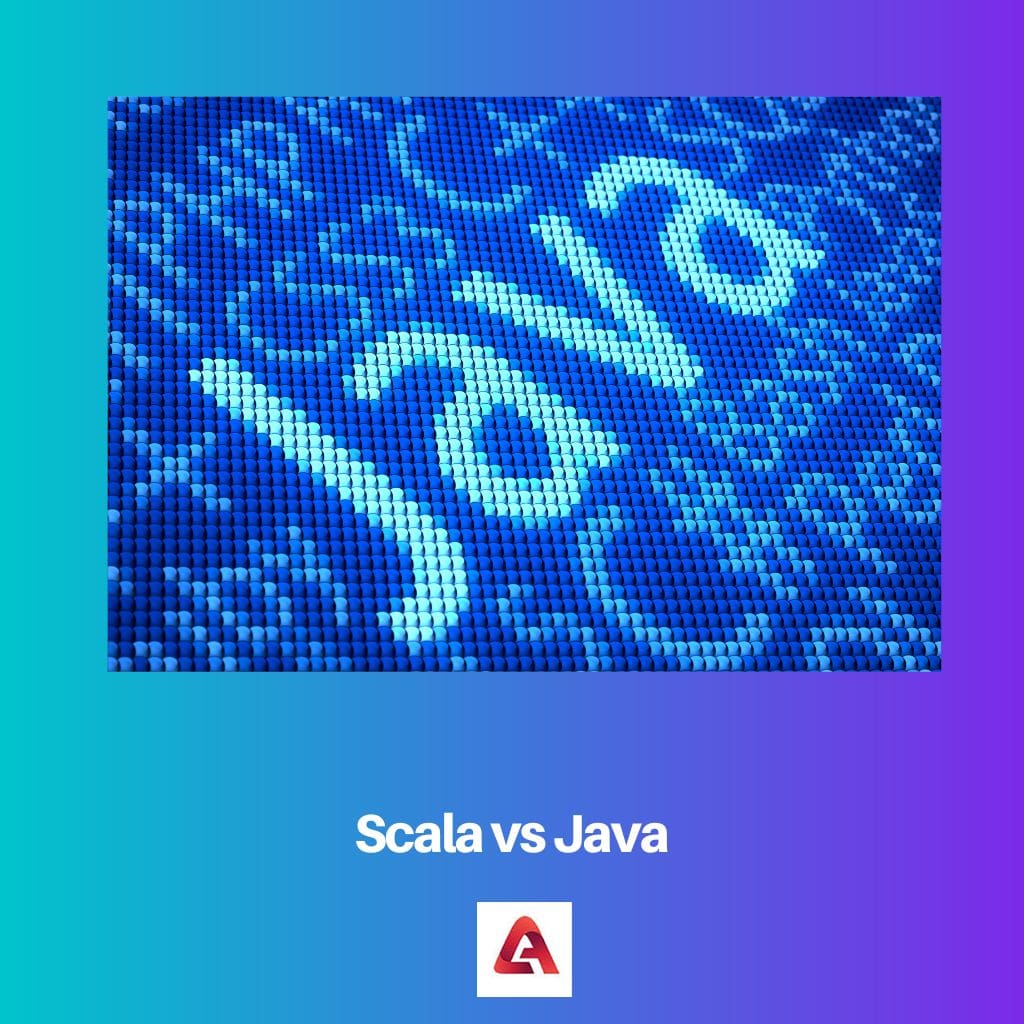In earlier times, when there was no programming language, a computer user needed to understand the whole hardware and machine and how to run the program, but slowly the operating systems came into effect and provided relief from the extreme hardware knowledge.
Here we will be discussing the difference between two major languages in fashion, the first one, Scala and the second one, Java.
Key Takeaways
- Scala is a modern programming language that combines object-oriented and functional programming paradigms, while Java is an older, widely-used object-oriented programming language.
- Scala offers concise syntax and type inference, resulting in less code than Java.
- Scala seamlessly integrates with Java libraries and frameworks, making it easier for Java developers to transition to Scala.
Scala vs Java
Scala is an object-oriented and functional programming language that is used to build web applications and services or write code for big data systems. Java is an object-oriented programming language that uses a large number of lines to execute a function. It is used for numerical computing, big data and android development.

Scala is compatible and is of utmost importance. The reason for its compatibility is that the compiler uses JVM bytecode. Scala uses the Java type in their way, and that makes them more creative and elegant. Their coding is short, so there is no vast typing.
Java is a programming language that was developed by J. Gosling in 1955 at Sun Microsystems. It is designed in such a way that it can run on any platform that supports Java.
It writes codes only once, and codes are easily understandable and can be comprehended effortlessly.
Comparison Table
| Parameters of Comparison | Scala | Java |
|---|---|---|
| Design | It is an objective-oriented language | It is a mixture of objective and functional programming |
| Backward compatibility | Supports backward compatibility | Don’t modify it |
| Treatment of operators | Operators are not managed using method calls here | All operators are managed through method calls |
| Compactness | There are long cables with several lines used | These are short, and so are easier |
| Objective oriented | Less object-oriented | More object-oriented |
What is Scala?
Scala is a type of programming language with powerful features from different functional languages. They incorporate those with some creative ideas of their own and thus establish a beautiful impact.
Scala stands for the term “scalable language,” and it got such a name as it was to grow along with the user’s demand. Scala can be used in writing small articles to large scripts.
It is a mixture of functional programs and object-oriented concepts in a statically typed language that is observable in different aspects of Scala.
It is very flexible, and so it is an interesting platform plus, being convenient, it is also easy to learn and understand. The additional library offered by Scala implements it.
The scalability of Scalar contains many features, such as Syntax details to component abstraction, and the combo of functional programming, along with being object-oriented, adds to the scalability factor.
No other language does this intertwining of converting it into a uniform language design. Scala is an object-oriented language in its purest form. We even have an example related to this concept.
Every operation is called a method call; the object is denoted by value. When we say a (1 + 2) in Scala, we invoke a method name and define a value in the class interval.
When it comes to the composition of objects, there is no programming language more advanced than Scala.

What is Java?
Created in 1995 by Sun Microsystem, Java is used in computers as a programming language. Oracle owns Java, and a billion devices run on Java.
Mainly it is used in internet-based, simple, and efficient applications, and java is particularly designed to run on such platforms.
It has both types of language, compiled and interpreted because the source is converted into binary code.
This binary code provides Java with the efficiency to run on any platform or any Java virtual machine because it has got portability, so it doesn’t require setting any same type of software or hardware configuration.
Some web browsers also contain this Java virtual machine to run various java applets.
When we compare java to some other languages, they are slower because of the java virtual machine, but it is more secure and portable.
Java allows you to alter any program while it is going on as it is dynamic in feature. Their programs are nicely structured.
Although there are some restrictions in the execution of some functions that maintain the integrity of java programs and make them highly secure, most of android applications are based on the java language.
Some of its merits include
- Easy to understand and simple to use
- Rich set of APIs of java
- Supports Android
- Slow, but require evolution over the years.
- Open to large numbers number of people, so has good community support.
Used for
- Desktop application
- Web application
- Mobile application
- Games
- Web Server

Main Differences Between Scala and Java
- Scala is a computer language. On the other hand, java is a high-level programming language. It is an object and fun programming language.
- Scala is a multi-platform with a network-centric interface, whereas Java is a statically typed language.
- Scala can handle the overloading of operators, whereas it is not easily possible for Java.
- Scala does not contain nested codes, while Java includes nested code, which makes it more friendly.
- In Scala, source course compilation is not fast, while in Java, source course compilation is faster.

This article provides an insightful comparison between Scala and Java. Both languages certainly have their merits.
Scala seems to offer a very elegant and innovative approach to programming. It’s quite fascinating.
I’ve been using Java for a long time, but after reading this article, I’m intrigued by Scala’s scalability and flexibility.
The main differences highlighted between Scala and Java were very informative. I appreciate the clarity the article brought to this comparison.
Absolutely, this really provided a comprehensive understanding of both languages.
It’s amazing how much technology has evolved. Scala seems like the future here, doesn’t it?
Definitely, the concise syntax and type inference of Scala is very appealing.
Java has had its time. I think it’s time to move on to something more modern like Scala.
I’ve always been interested in the comparison between these two languages. Scala seems like it has some great advantages over Java.
Java’s extensive use is undeniable, but Scala’s features make it an appealing option for future projects.
Agreed, Scala’s concise coding and seamless integration with Java make it stand out.
The compositional objects and object-oriented language design of Scala offer a very intriguing perspective on programming.
I think Scala’s compatibility is definitely a major advantage. It’s smart how they leverage Java libraries and frameworks.